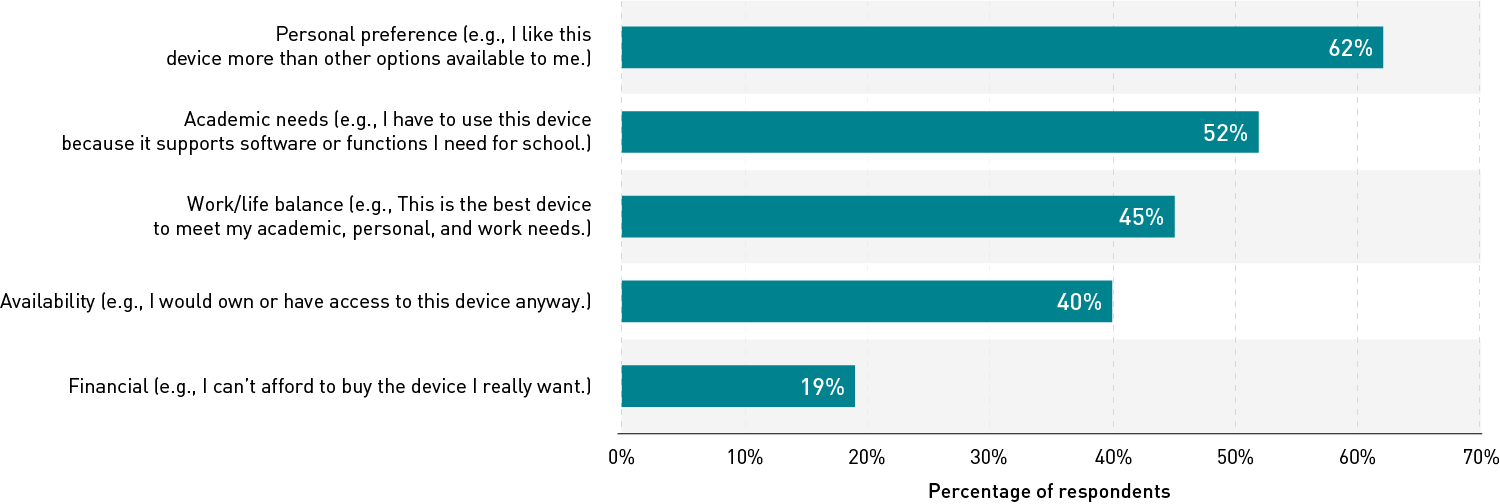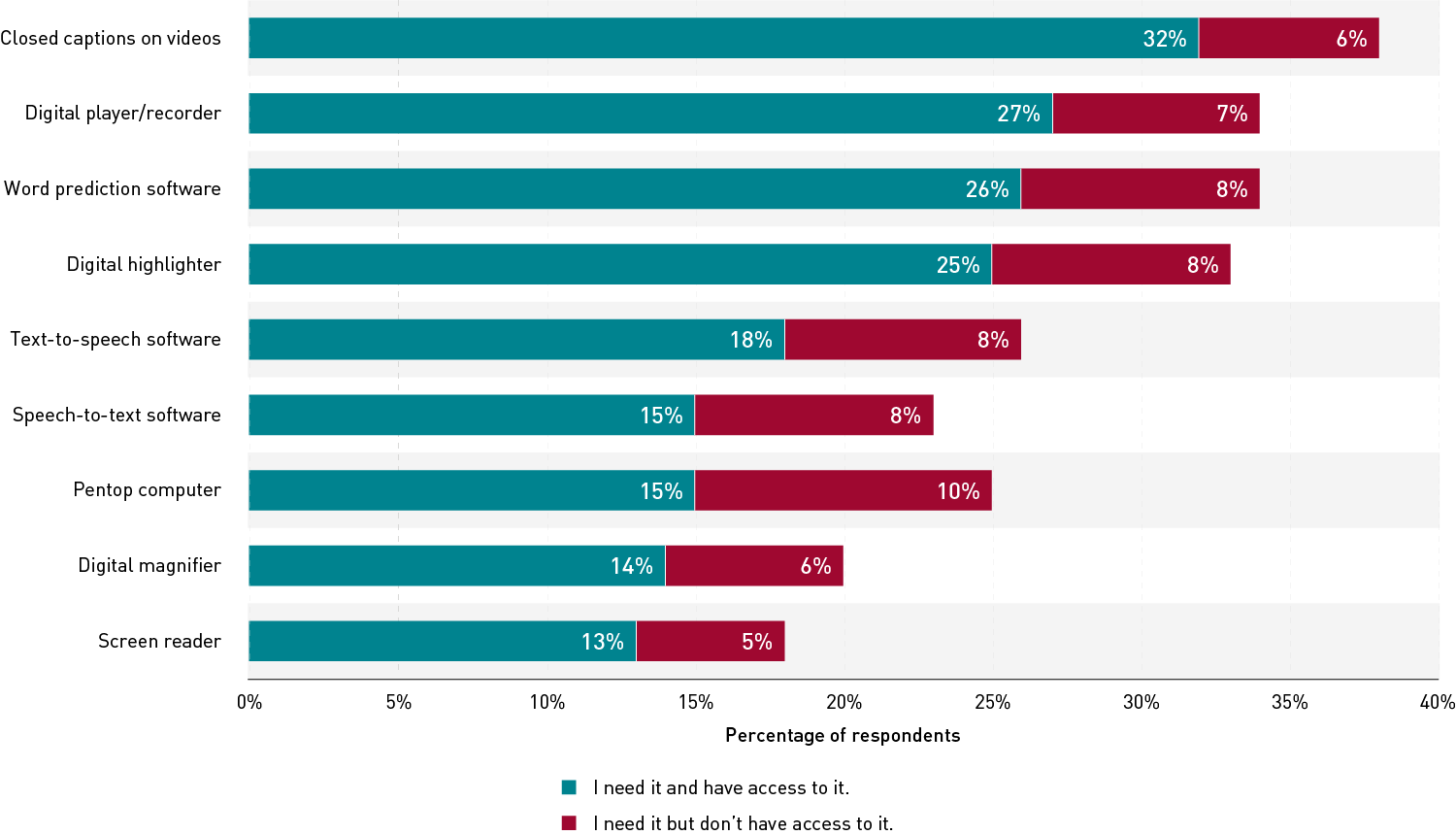Access to Educational Technology
Device access is a complex issue. Our previous research on students' access to technology suggested that most students have the devices they need to complete their schoolwork. In keeping with those findings, 94% of respondents to this year's survey indicated that they can access their primary device anytime they want to, and 95% of respondents indicated that they own their primary device. Most respondents (86%) indicated that they use either a laptop (72%) or desktop (14%) computer as their primary device.
However, not all access is equal. When asked to identify the top three factors that influenced the selection of their primary device, 62% of respondents chose personal preference (see figure 7). We hypothesize that choosing a device by personal preference is a privilege, so we disaggregated these data to see which groups of respondents were more or less likely to choose this response option. Differences were seen in several demographic categories. For example:
- Just over half (52%) of respondents who identified as having at least one disability indicated that they chose their device by personal preference, as compared to 64% of respondents who did not identify as having a disability.
- Only 44% of respondents who said their housing situation was determined by pandemic-related circumstances indicated that they chose their device by personal preference, as compared to 65% of respondents who were not in a pandemic-related housing situation.

These differences point to the complexity of providing equitable device access for all students. To ensure that device access is truly equitable, educational technology leaders should investigate beyond whether students have basic access to adequate devices.
Assistive technology is not only for students with disabilities. It is well-known that students with disabilities are underserved for a number of reasons. In this survey, only 5% of respondents indicated that they have a disability for which they need assistive technology. However, when provided with a list of specific assistive technologies, every item on the list was selected as necessary by at least 18% of respondents (see figure 8). Over a third of respondents (38%) said that they need captions on videos. In fact, when asked about the most effective use of technology they have experienced since the beginning of the academic year, many respondents mentioned recorded lectures and specifically called out features such as reading closed captions, pausing for note-taking, and rewatching to improve understanding. These data are consistent with previous EDUCAUSE research on the needs of students with disabilities and support efforts to provide all students with access to assistive technology, regardless of whether they report having disabilities.
